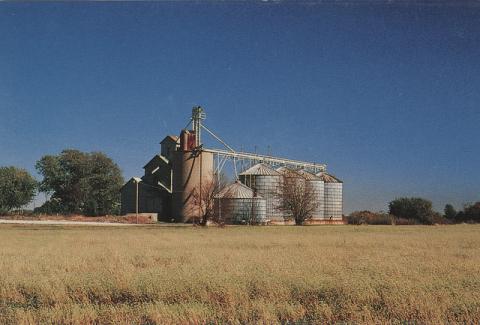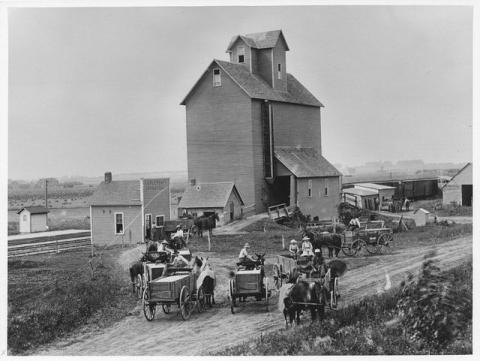Grain elevators, still dominate the rural Midwest skyline although they are not as prevalent today as they were in the late 19th – early 20th centuries.
Invented in 1842 by Joseph Dart and Robert Dunbar in Buffalo, New York, the grain elevator quickly migrated to the Midwest and the Plains where an expanding railroad made it possible to efficiently transport grain straight from the farmland.
These country elevator houses were built roughly every ten miles at railroad terminals to enable farmers to deliver their harvest by horse and wagon and return home on the same day.
A uniquely North American architecture, the grain elevator, was designed for function and simplicity. Engineered to withstand the tremendous pressure of stored grain while protecting the harvest from summer heat and harsh winters these structures embraced utilitarianism.
They also embraced community. Grain elevators played the role of employer, customer, investment, and community hub – it was not unusual to find commodities such as fertilizer, feed, seed, coal, and lumber being sold at the local elevator.
We have put together a collection of Champaign County’s elevators. We hope that you will share your memories or impressions of these “Sentinels of the Prairie” with the Archives.
- Sherrie, Archives Librarian


